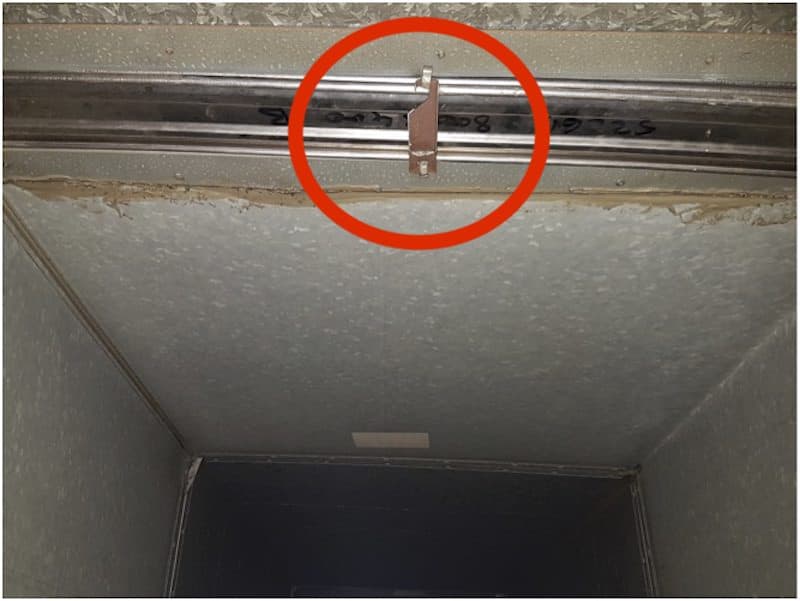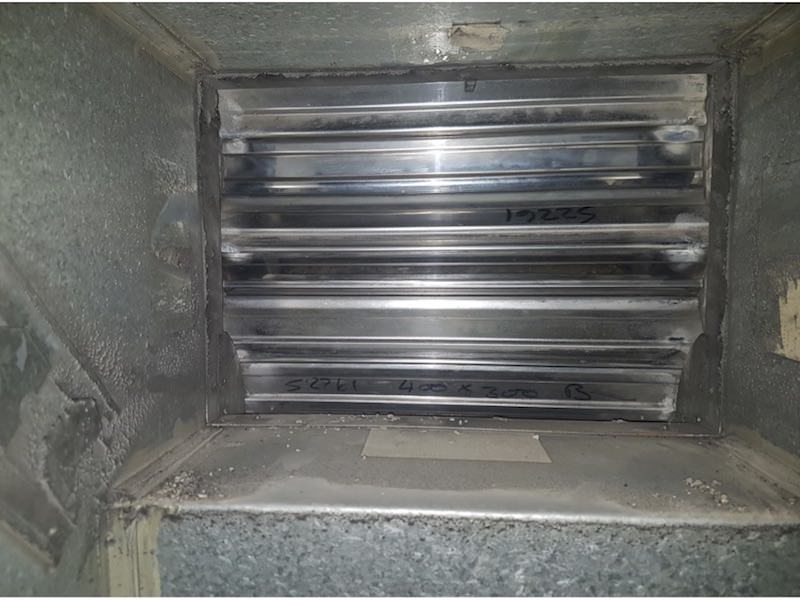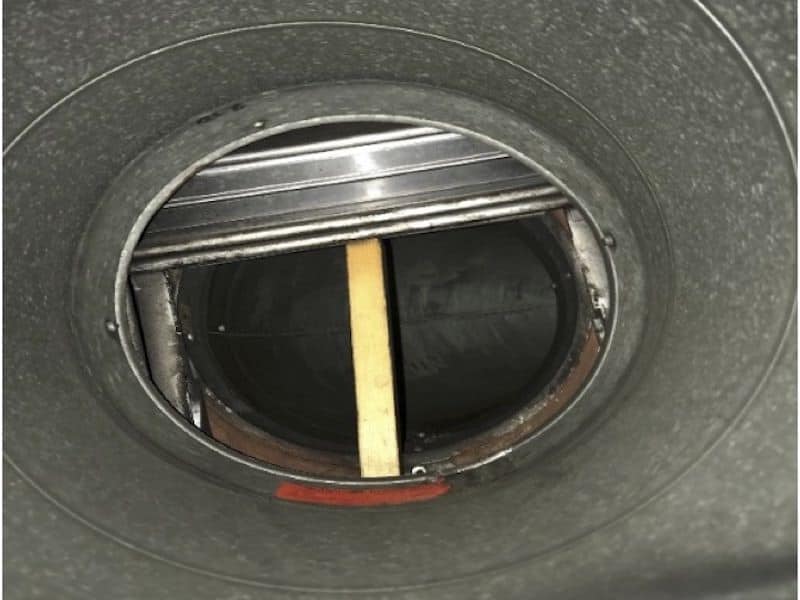
Fire damper maintenance is not something the average office or factory worker would ever notice, but they could potentially save a life. Over the last few years maintaining fire dampers has become one of the very common roles the Kimpton Maintenance Division perform. It’s easy to overlook but for us, is a vital task.
Almost any large office building with ventilation will have ducting, often hidden behind false ceilings. It’s very efficient for moving air around, but equally, every bit as efficient at moving smoke and fire too. Whether it’s between walls, floors or even neighbouring buildings, fire will travel, so there needs to be a system to stop this.
One simple looking, but vitally important component in fire prevention is called a fire damper. Fire dampers are passive fire protection components used extensively within heating, ventilation and air conditioning ducts to prevent the spread of fire throughout a building.
When a fire starts, there will be a rise in the ambient room temperature and as heat rises, it will begin to transfer heat into the ducting system, normally housed in the ceiling. This rise in temperature, activates a thermal element which melts at temperatures that are higher than the hottest ambient temperature, but low enough to indicate there is excess heat in the system. (Normally around 75 degrees celsius).

A fire damper in the open position – You can see the temperature sensitive element circled here in red.
The breaking of the element closes the damper blades – like a metal curtain or drop down shutters – within the ducting and prevents fire from travelling into the neighbouring workspace. It contains the fire within the space it starts in and allows people who may be close to the fire to safely evacuate.

A fire damper in a closed position during testing
Fire dampers can also close following an electrical signal from a fire alarm system which uses detectors away from the damper, that indicate heat or smoke in the buildings occupied spaces or in the HVAC duct system.
Fire damper maintenance is both a legal requirement and a critical part of building fire safety management. Compliance to current regulations means these fire dampers must form part of a planned preventative maintenance regime where spring operated fire dampers should be tested annually and be repaired or replaced immediately if found to be defective.
As the damper is held open with a small and slightly delicate component, these can break or be activated accidentally. If this happens, conditioned air from the ventilation system cannot flow and offices can overheat. It’s because of this that people sometimes take matters into their own hands.
At Kimpton, we have been providing a qualifying inspection service for a number of years. Recently, during an inspection on one of our new clients’ site, we discovered one fire damper that we presumed to have been accidentally deployed. This had then been wedged open with a piece of wood. There were a number of others within the same site that had been left with their transit straps still in position. This meant the damper was permanently jammed open.

Fire damper jammed open with wooden stick
What happens if the fire damper triggers when it is jammed open with a stick? This video (at 25 seconds) shows you that even if it is activated, it will not protect you from fire or smoke.
This can have deadly consequences if a fire starts as the system will not operate and lives will be at risk. Fire damper maintenance is therefore essential and a legal requirement.
As a manager of any non-domestic building you must constantly evaluate the risks associated with fire and take general fire precautions. Our team are increasingly being asked to deliver planned and preventative maintenance for fire damper systems. It’s an easy job to overlook, but one that lives depend on.
If you would like to discuss any of our services, please call 0151 343 1963 or complete the form below and we will be in touch shortly.